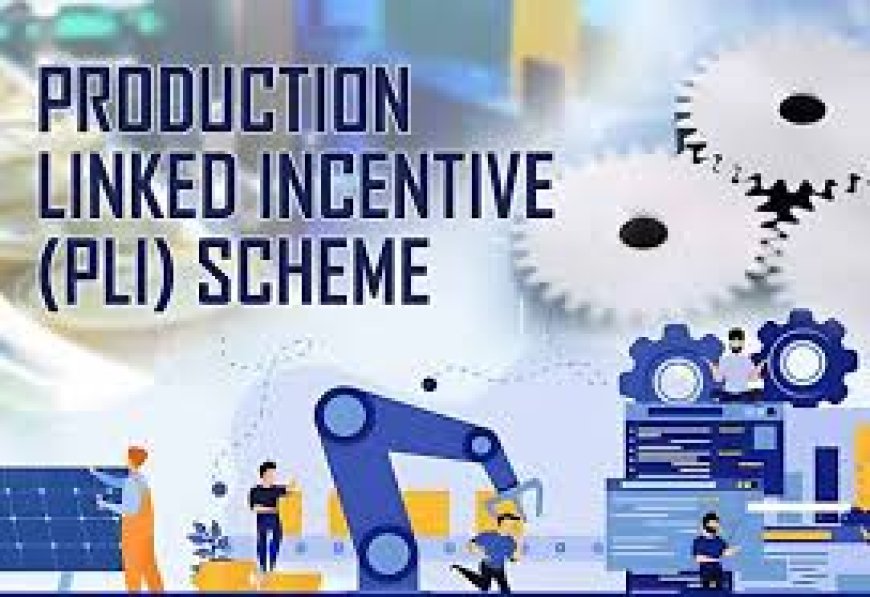Incentives worth Rs 21,534 crore disbursed till March under PLI schemes for 12 sectors
The Indian government has disbursed ₹21,534 crore under PLI schemes till March 2025 across 12 key sectors including electronics, pharma, and auto. Read the full sector-wise breakdown, expert insights, and investor impact.

New Delhi, June 25, 2025:
The Indian government has disbursed production-linked incentives (PLI) worth ₹21,534 crore till March 2025 across 12 critical sectors, underscoring its push to bolster domestic manufacturing, reduce import dependence, and create jobs. This figure marks a substantial rise in actual payouts under the flagship scheme aimed at transforming India into a global manufacturing hub.
According to data released by the Ministry of Commerce and Industry, the disbursement covers sectors ranging from electronics and pharmaceuticals to auto components, textiles, and specialty steel. The PLI scheme, which spans 14 sectors overall with a total outlay of ₹1.97 lakh crore, was introduced in 2020 to incentivize companies for incremental production and domestic value addition.
Sector-Wise Performance: Electronics Leads, Pharma Gains
The electronics and IT hardware sector has emerged as the largest recipient of incentives so far, accounting for over ₹5,400 crore. Major players including Foxconn, Wistron, and Dixon Technologies have ramped up production capacities, spurred by government support and rising global demand.
The pharmaceutical sector has also shown notable traction. Beneficiaries under this segment have collectively invested over ₹15,000 crore and have received around ₹3,500 crore in incentives. The sector’s performance has been boosted by increased global reliance on India for APIs (Active Pharmaceutical Ingredients) and KSMs (Key Starting Materials).
Other strong performers include:
-
Automobiles and auto components: ₹2,800 crore disbursed
-
Telecom and networking products: ₹2,100 crore
-
Food processing: ₹1,700 crore
-
Textiles: ₹1,100 crore
-
White goods (ACs and LED lights): ₹950 crore
746 Applications Approved, 176 Beneficiaries Operational
So far, the government has approved 746 applications across the 14 sectors, of which 176 companies have already commenced commercial production, creating approximately 325,000 direct jobs. The scheme is projected to generate over 60 lakh jobs, both direct and indirect, over its lifetime.
A senior official at the Department for Promotion of Industry and Internal Trade (DPIIT) noted, “The disbursement of over ₹21,500 crore marks a turning point. We are now seeing strong momentum in production and investment, particularly in sunrise sectors like electronics, green energy, and medical devices.”
Market Response and Investor Outlook
Analysts believe the PLI payouts signal a long-term structural shift in India’s industrial policy.
"The government’s focus on incentivizing scale and competitiveness is beginning to show results," said Rohit Rathi, industrial policy expert at EY India. "Unlike subsidies of the past, PLI directly rewards performance, which ensures capital efficiency and accountability."
Publicly listed companies benefitting from PLI—such as Dixon Technologies, Amber Enterprises, Hindustan Foods, Tata Elxsi, and Sun Pharma—have seen strong stock performance over the past year. Sectors like electronics, EV components, and solar modules are expected to witness double-digit earnings growth over the next 2-3 years, driven by enhanced capacity utilization and exports.
Investors are particularly optimistic about sectors where India holds strategic growth potential, such as:
-
Semiconductors and display fabrication
-
Advanced chemistry cell (ACC) batteries
-
Green hydrogen and renewable energy
Challenges Remain: Execution, Compliance, and Global Headwinds
Despite progress, certain challenges remain. Delays in land acquisition, compliance bottlenecks, and global macroeconomic uncertainty continue to impact timely execution in some sectors, particularly semiconductors and specialty steel.
"PLI is a significant reform, but its success depends on consistent monitoring and timely payouts," said Tanvi Mehta, an economist at Nomura India. "It’s crucial that the process remains transparent, time-bound, and investor-friendly."
Additionally, the government has emphasized compliance enforcement, noting that disbursements are strictly tied to pre-agreed performance criteria. Several applicants have been disqualified or had their claims withheld due to discrepancies in output data or investment documentation.
Road Ahead: ₹3 Lakh Crore Investment Pipeline
With over ₹1.3 lakh crore already invested and more than ₹3 lakh crore in committed investments, the Centre is optimistic about achieving the larger goal of raising India’s manufacturing share to 25% of GDP by 2030.
The second phase of PLI for sectors such as semiconductors, green hydrogen, and drone technology is expected to take center stage in FY26. These emerging sectors align with India’s decarbonization goals and ambition to be part of global technology value chains.
A senior official at NITI Aayog stated, “The PLI scheme is not just about incentives; it’s about building an ecosystem of innovation, scale, and supply chain resilience. India is well-positioned to leverage this as global firms seek alternatives to China.”
A Critical Milestone in India’s Manufacturing Story
The disbursement of over ₹21,500 crore under the PLI schemes marks a key inflection point in India’s economic development strategy. While execution risks and global uncertainties persist, the model of targeted, performance-linked incentives is being closely watched by investors and policymakers alike.
If the momentum continues, the PLI scheme could very well become the cornerstone of India's “Make in India” 2.0 vision—fostering innovation, job creation, and global competitiveness in the decade ahead.
What's Your Reaction?
 Like
0
Like
0
 Dislike
0
Dislike
0
 Love
0
Love
0
 Funny
0
Funny
0
 Angry
0
Angry
0
 Sad
0
Sad
0
 Wow
0
Wow
0












































































